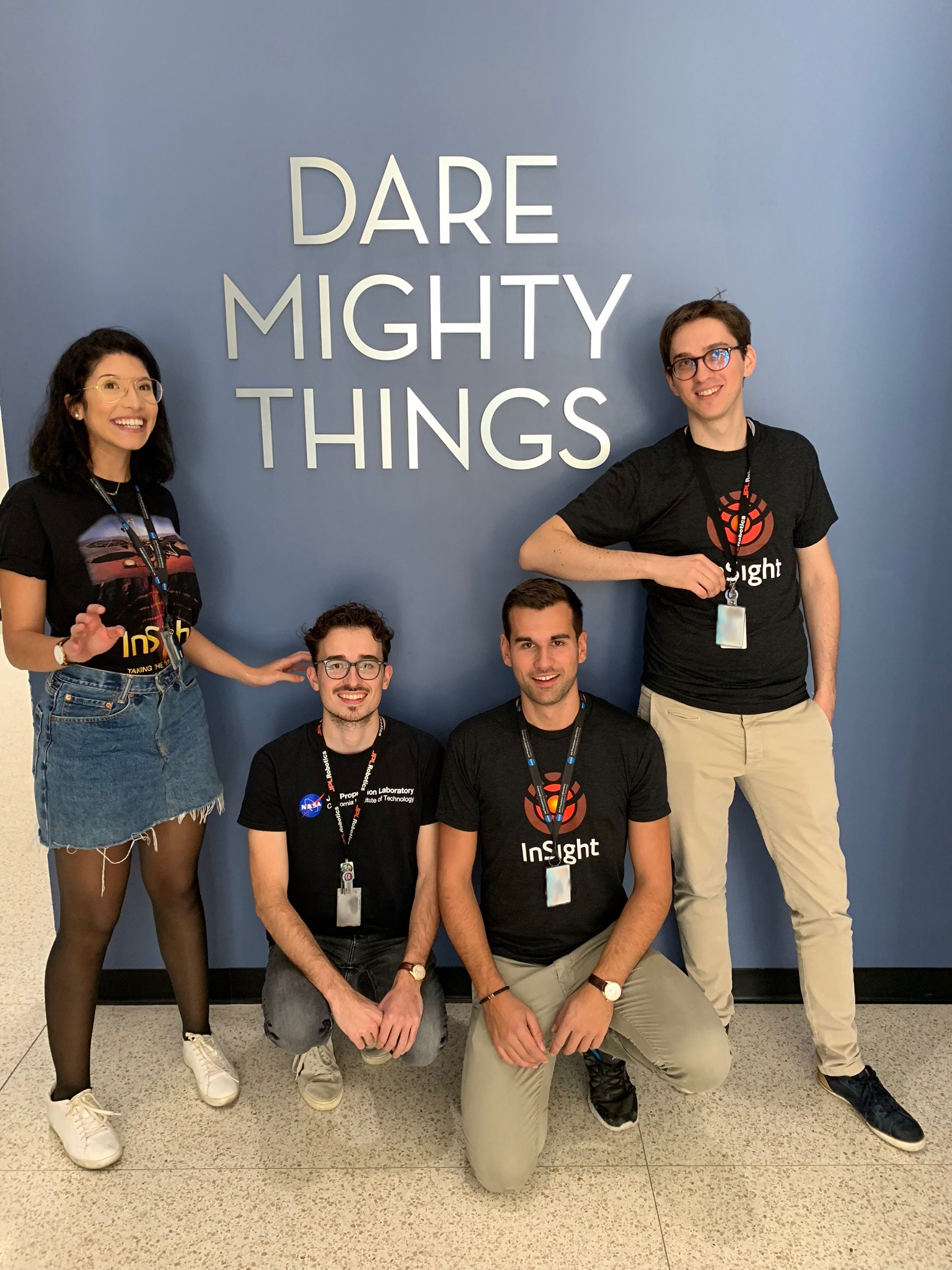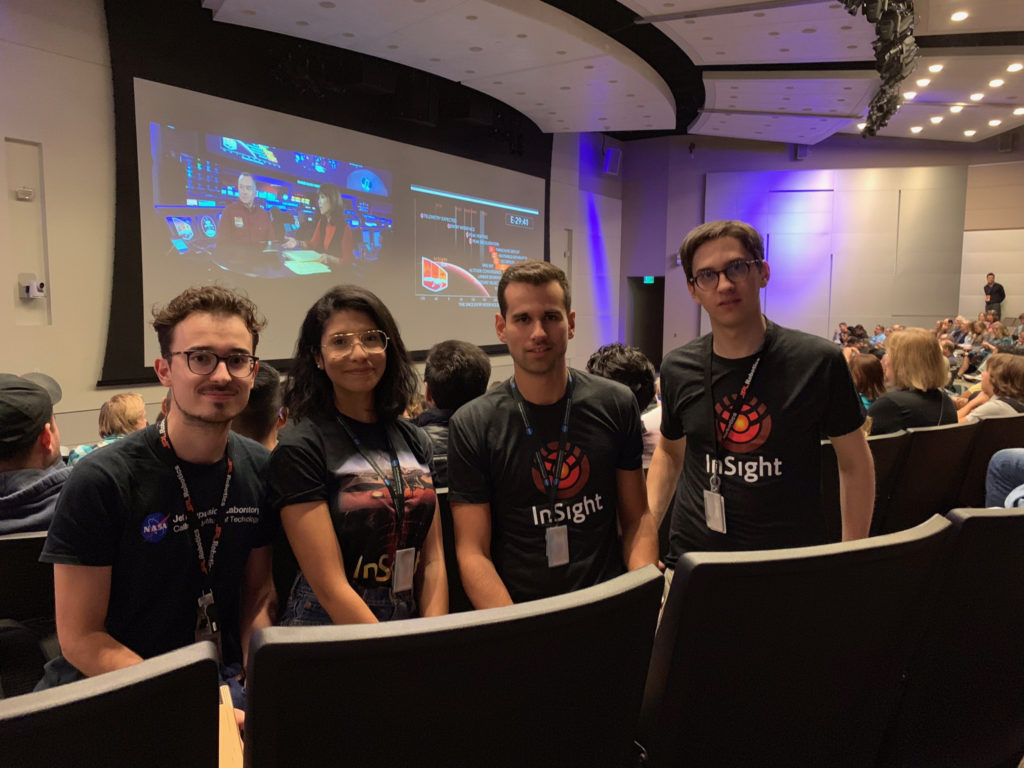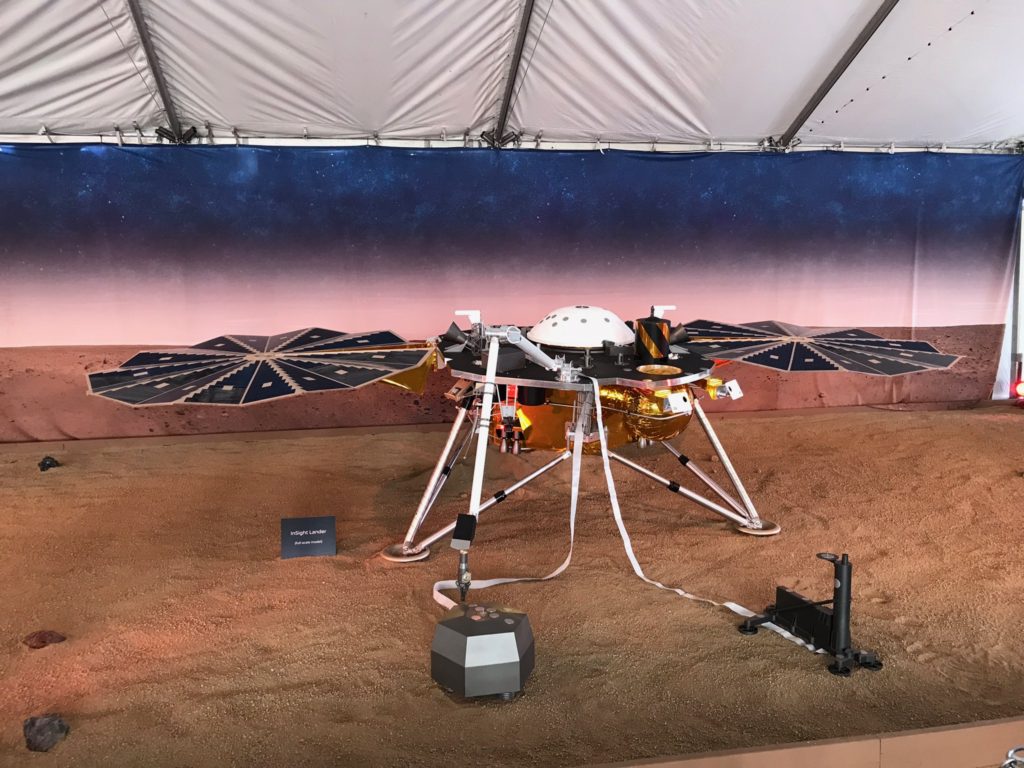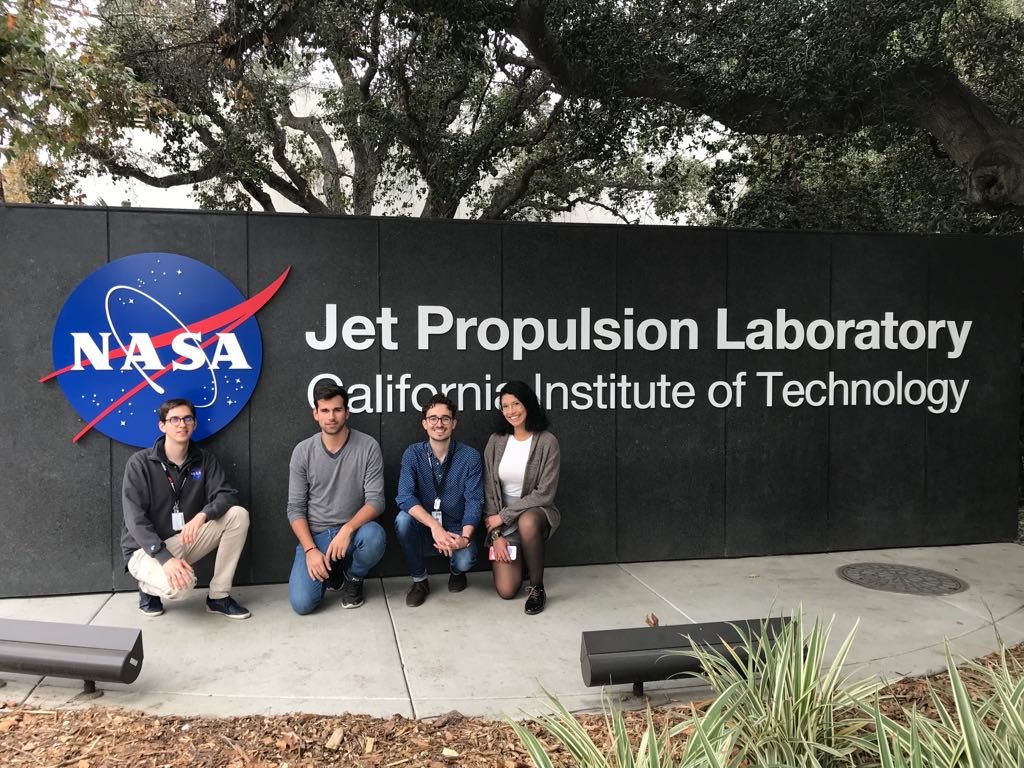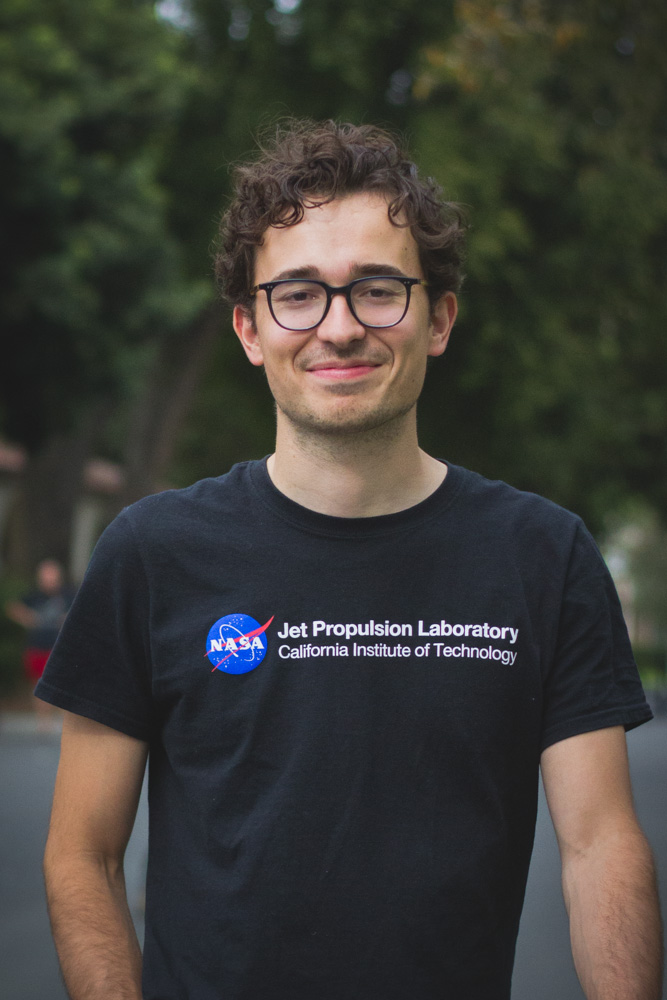Arriving at NASA Jet Propulsion Laboratory (JPL) on the morning of November 26th, 2018, we could clearly feel the tension in the air. Safety measures had been increased due to the presence of high-level NASA officials and external visitors on campus. Reporters were setting up their equipment, hoping to capture the historic event. JPL engineers gathered in mission control and in the two main auditoriums on campus. Half an hour before the planned touchdown, four of us joined the crowd in one of the auditoriums.
As the landing edged closer, mission control started read out the main elements of the landing sequence, as they received the telemetry data sent from the spacecraft. This data; however, is delayed by several minutes which means that once the engineers get word that the lander has entered the Martian atmosphere, the vehicle had either already landed successfully or crashed on the surface. They refer to this phase as the infamous “seven minutes of terror” in the JPL community. To ease the tension, the engineers pass along “lucky peanuts” shortly before this critical phase.
Total silence spreads across the auditorium. “100 meters, 50 m constant velocity, 37, 30 m, 20, stand by for touchdown… Touchdown confirmed!” The confirmation that InSight, equipped with a seismometer built by scientists from ETH Zurich, had safely landed on Mars prompted ecstatic cheers and applause from all the teams at JPL. InSight joins a family of international rovers and landers uncovering the mysteries of Mars. It is the first outer-space robot to analyse in-depth the inner structure of the red planet. This opportunity was in part, made possible by more than two decades of cutting-edge seismology research at ETH Zurich. Indeed some of InSight’s data streams will be processed and interpreted by the ETH “Marsquake” service.

